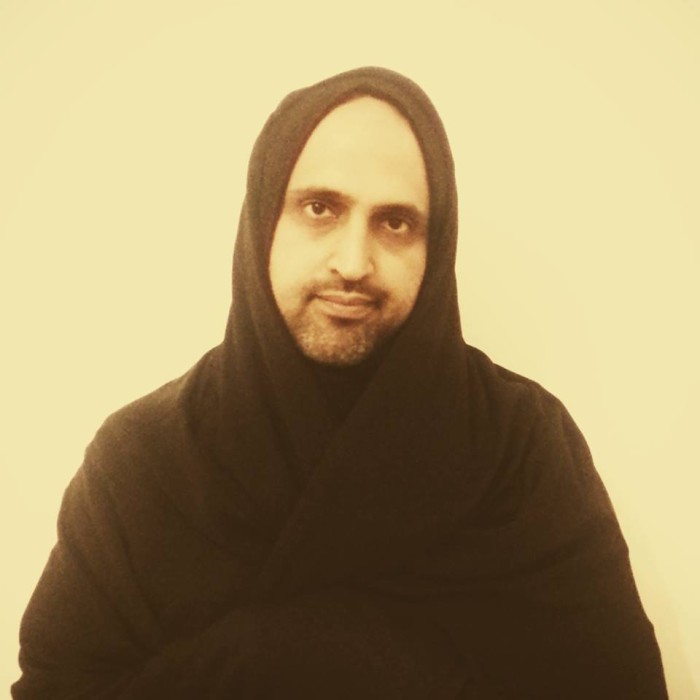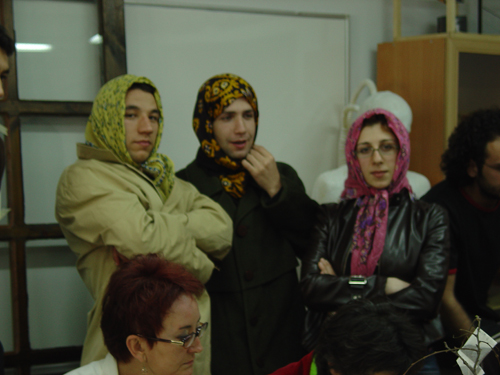Not just any scarf

There is no other piece of clothing discussed as controversial as the headscarf. Maybe women’s trousers were considered in a similar problematic way in the 1920s. Or the shortening skirts during the 60s. There were questions of moral and appropriateness arising, but they never contained religious aspects. The headscarf on the contrary is always leading to extensive debates – tapping on fashion, religious feelings and questions of women’s rights all together.
As Abdullah Hamidaddin, author and commentator from Lebanon, writes in an articel recently published on Qantara, the headscarf has gone through different meanings: „It has been an expression of male dominance, an act of religious piety, a manifestation of female oppression, a limitation to a female’s power of seduction, an icon of cultural pride, a slogan of resistance to colonialism, imperialism and globalisation, an indicator of a worthy wife, an evasion of feminine competition, a marker of otherness and a discouragement to harassers.“ Due to this plurality Hamidaddin mentions that it is insufficient to talk about „the hijab“ but about „the hijabs“. But his key point is another one: the tradition of wearing veils has always been a female one.
“As if I was posing nude in Times Square.”
In a discussion among friends on sexual molestation Hamidaddin was of the opinion that this crime is – as most of sexual maledictions – to be seen as a „pathological expression of power“. Because of this character of the offence, wearing a headscarf would not protect the women of getting victimised, he argued. So for him, the hijab in a way symolises the „men’s power over women“. Which lead reversed to his tweet: „A world in which women rule, men shall wear the veil.”
To underline his point, Hamidaddin put on his daughter’s headscarf and posted the resulting picture on Twitter and Facebook. With doing so he wanted to remind of the powerful male dimension lying in this piece of clothing and intended to scratch on the sharp distinction of men and women. The reactions he received were plenty, but very diverse as well: „It was as if I was posing nude in Times Square“.
As multifaceted as the feedback in the social media towards a man in a hijab are the ways states deal with the question of veiling: While France banned the wearing of burkas in general, they are still allowed in Great Britain. After a more than 11 years lasting trial the highest German court decided two weeks ago that teachers must be allowed to wear headscarves at school.
[widgetkit id=18209]
In Turkey, the issue might come up again the next Thursday, when the country is celebrating the Turkish Grand National Assembly’s first gathering 95 years ago. For one day public representatives are symbolically handing over power to children. Children teached by women, who were not allowed to wear a veil at work until recently. For the longest time the republic of Turkey has been sticking to the laical will of its founder, Mustafa Kemal Atatürk. He rejected the hijab as reactionary, un-Western and banned it from public institutions. Ruling AKP has been lifting this ban now and the country is still devided how to assess this: An act of liberation enabeling women to participate in public service displaying their way of life as AKP states? Or a strategy fostering the presence of religious elements in public, changing the whole country for the more conservative, as critics fear?
One who already brought this issue up in Turkey is Erdem Gündüz, later known for his silent resistance during the Gezi protests. „The standing man“ entered a university wearing a headscarf already in 2004 as a performance. So maybe now the time to get used to men wearing veils has truely come.

